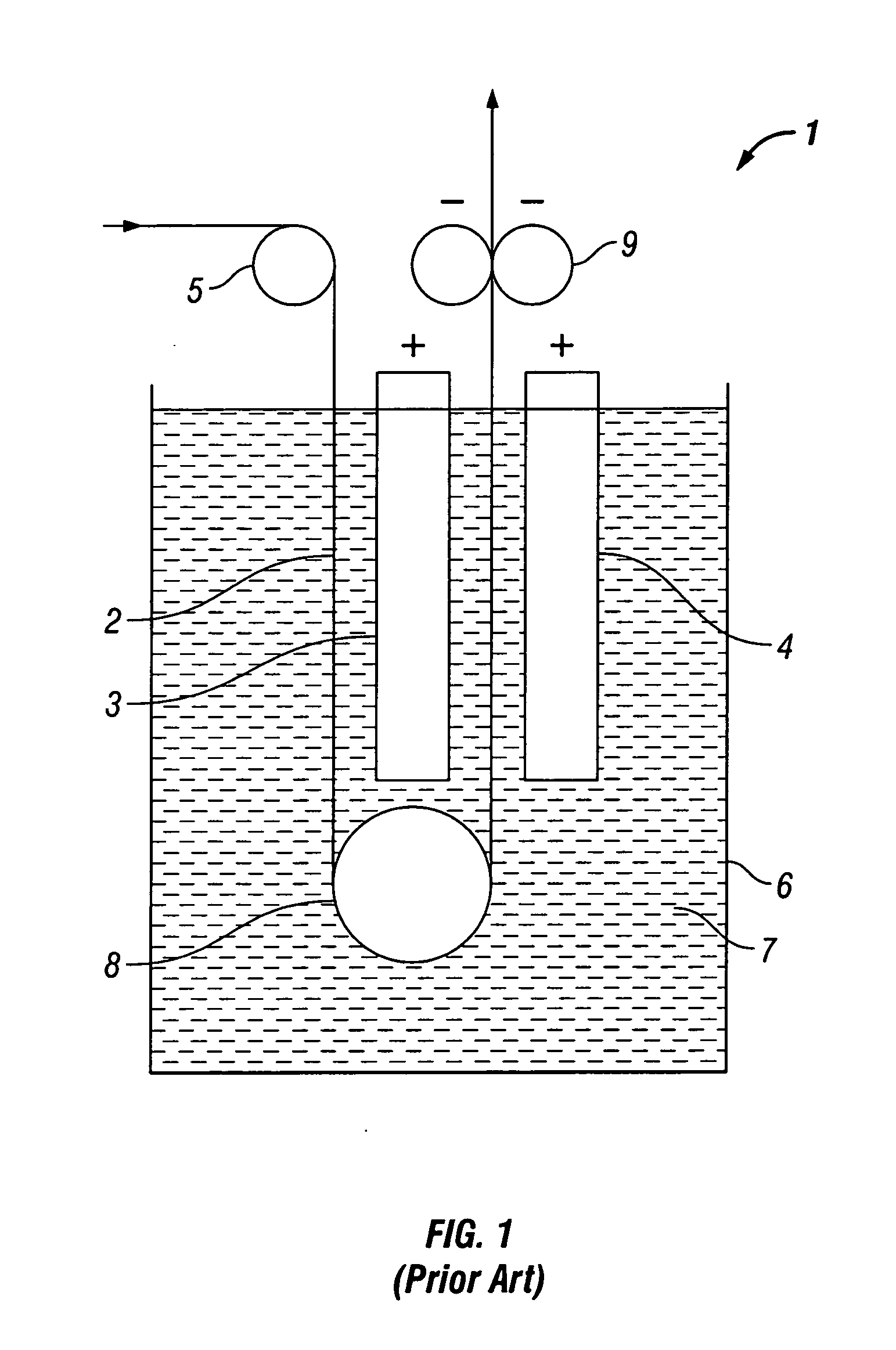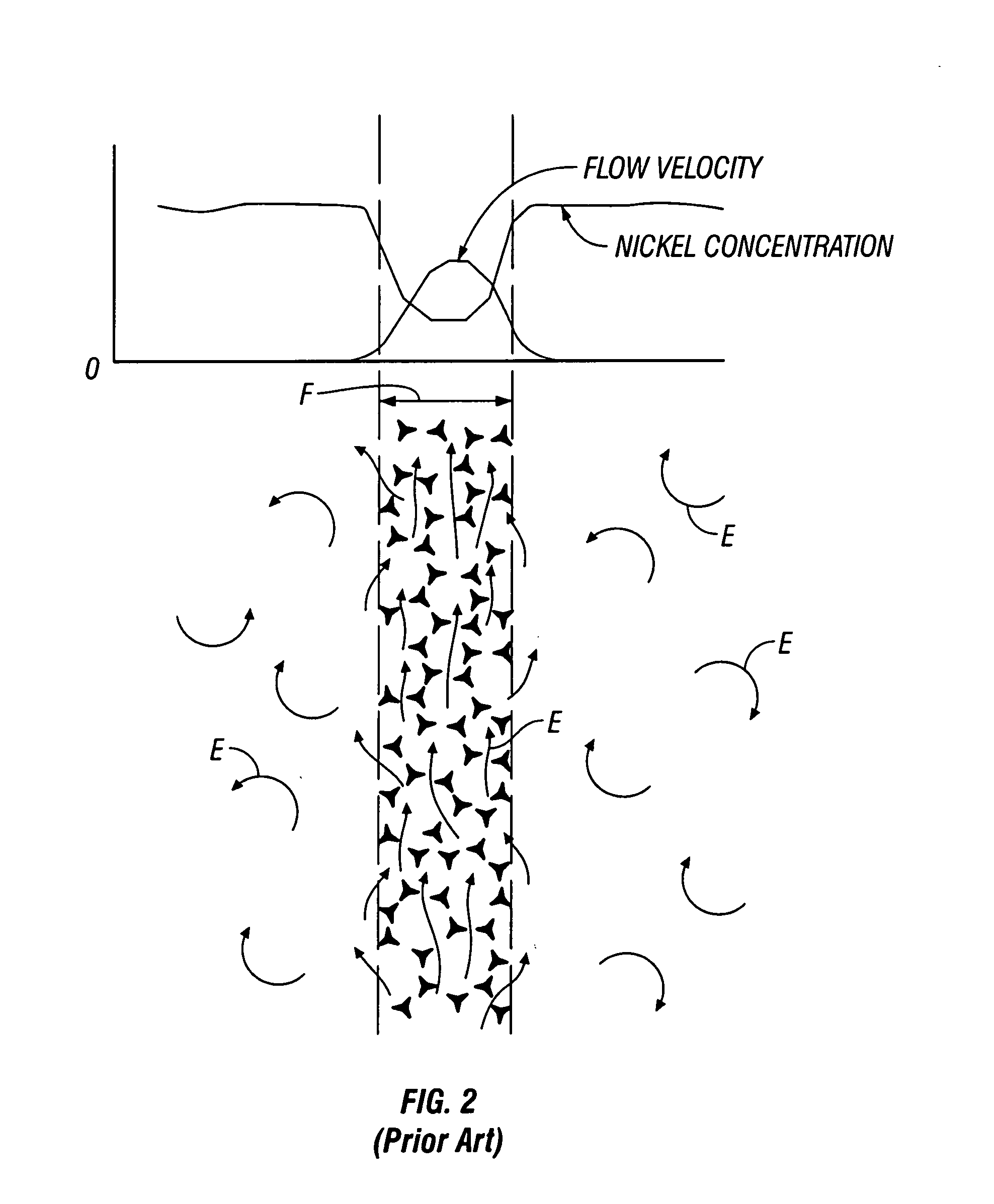Apparatus and foam electroplating process
a technology of electroplating process and apparatus, which is applied in the direction of electrolytic process, current insulating device, electrolytic device, etc., can solve the problems of depletion of electrolyte inside the foam structure, difficulty in uniform electrodeposition, etc., and achieve the effect of increasing the mass transport of electrolyte and reducing current density
- Summary
- Abstract
- Description
- Claims
- Application Information
AI Technical Summary
Benefits of technology
Problems solved by technology
Method used
Image
Examples
Embodiment Construction
[0021]Optimization of natural convection through the interstices of a foam matrix results in a more efficient electroplating process and a metal foam having more uniform deposition of metal throughout its structure. Accordingly, the techniques disclosed herein advantageously allow increased strength of the finished material, as well as more uniform surface and interior structure, increased tensile strength, dimensional stability, wear resistance, and corrosion resistance.
[0022]Natural convection of electrolyte solution through the interstices of a foam matrix is optimized during electroplating by inclining or tilting the foam cathode in a plater. FIG. 3 schematically illustrates laminar flow of electrolyte through an inclined foam cathode F′. Electrolyte motion and currents are depicted as arrows E′. As electrolyte solution contacts the cathode F′, as can be seen from the mass transfer graph, electrolyte is depleted in the area closest to the foam F′, leading to a zone of lower dens...
PUM
| Property | Measurement | Unit |
|---|---|---|
| angle | aaaaa | aaaaa |
| thick | aaaaa | aaaaa |
| thick | aaaaa | aaaaa |
Abstract
Description
Claims
Application Information
 Login to View More
Login to View More - R&D
- Intellectual Property
- Life Sciences
- Materials
- Tech Scout
- Unparalleled Data Quality
- Higher Quality Content
- 60% Fewer Hallucinations
Browse by: Latest US Patents, China's latest patents, Technical Efficacy Thesaurus, Application Domain, Technology Topic, Popular Technical Reports.
© 2025 PatSnap. All rights reserved.Legal|Privacy policy|Modern Slavery Act Transparency Statement|Sitemap|About US| Contact US: help@patsnap.com



